October 4 - 10, 2015: Issue 234
An Ancient Wine - From 1927 with Lineage to Cyprus in 1292 and Methods of Production to Greece in 800 B.C.
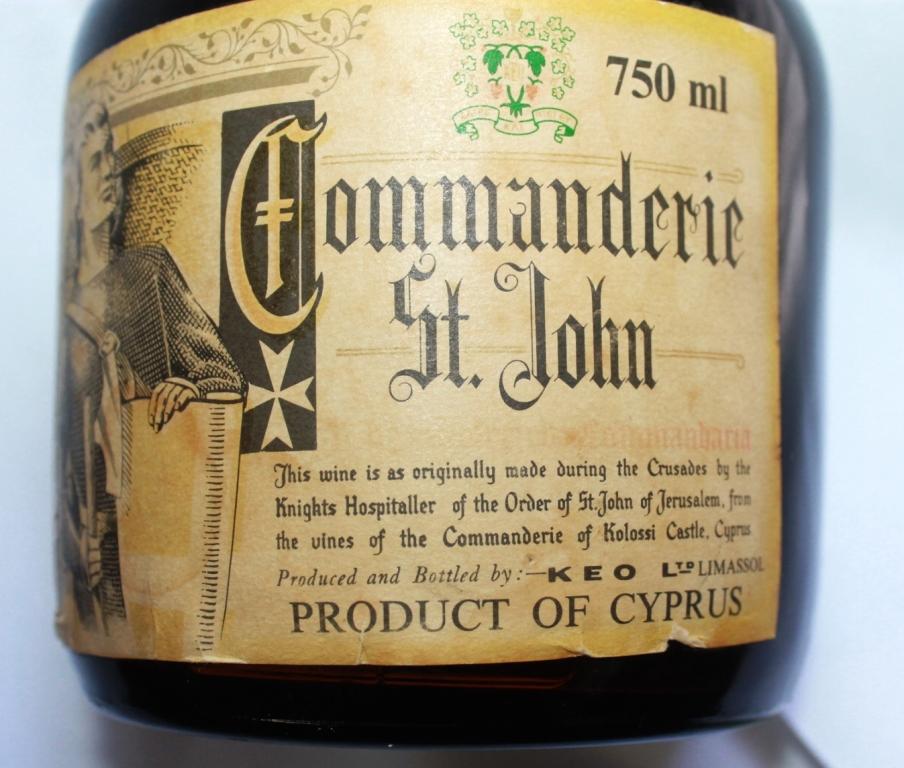
An Ancient Wine - From 1927 with Lineage to Cyprus in 1210/92 and Methods of Production to Greece in 800 B.C.
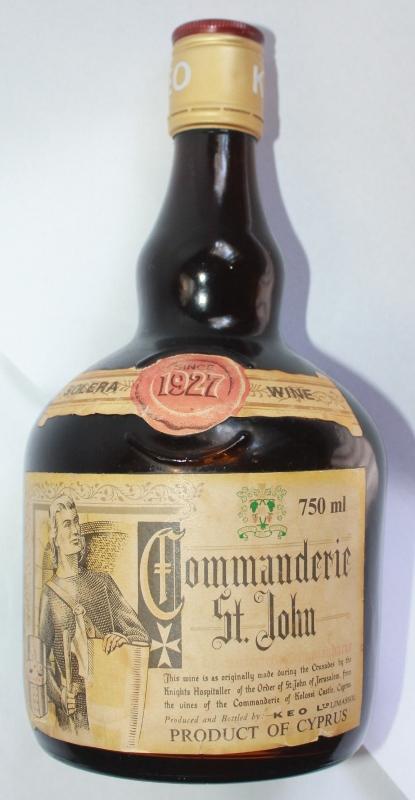 A while ago a dusty gift was made in the form of this bottle with its curious label stating that it is the same as one made during the crusades by the Knights Hospitaller of the Order of St. John of Jerusalem.
A while ago a dusty gift was made in the form of this bottle with its curious label stating that it is the same as one made during the crusades by the Knights Hospitaller of the Order of St. John of Jerusalem.
Now, while we imagined portly monks of the Middle Ages in cassock and hood, cherubically smiling while tenderly handling dark grapes in a sunny vineyard, or cast our imagination further back, see the white background and red cross of Knights Templar or the cross of St John on fluttering pennant and shield as a knight a’glint in burnie thunders across a desert plain, long blade brandished in one hand, bottle of Commanderie in the other, bellowing in a strange half French, half Scottish accent ‘let me put a bandaid on ye!’ prior to one enormous….HICCUP! …it may be better to start at the beginning, and find out how or why crusading knights had time to plant a vineyard, harvest the grapes…make wine…drink it.
An examination of the label may provide further clues…
Atop, on either side of the ‘Since 1927’ claim are the words ‘ Solera Wine’.Solera is a blending and maturation technique used for heavier styles of wine, particularly sherry, to create a consistent product. A typical solera consists of tiers of barrels stacked in such a way that the lowermost barrel acts as the source for the final blend. Each time an amount of liquid is drawn out, of it, the wines in the upper barrels are used to replenish it, thereby creating a fractional blend.
And, from Answers.com, a website filled with information for those of us who like to find old vintages, sup them:
'the brand name being KEO Commandaria St. John. It's a mixture whose base wine was 1927, and younger wine was added to top up the mixture up until (I'd presume) the early to mid 40's. While it's got a single 90's-plus nonprofessional rating on CellarTracker, that's similar to the next so-called 'vintage' dating produced, 1947. The releases of the last few years, since about the 1990s, have had no 'Vintage' date to avoid the above confusion with vintage wines.
[These wines, because of the mistaken idea that they are vintage wines, have often been sold for far more than they are actually worth.]
As a collector faced with a bottle of this wine in appropriate condition for age, I'd offer about $50-100 for it. It's not commercially available at present.
ahh, before we crack that label we better ensure we’re not spending the kiddlewinks inheritance…as other CellarTracker research states:
Commanderie St. John 1947 Solera is a sweet wine which is assembled according to the solera system; the oldest components of this wine dates from 1947. Bottled in the 1970’s by KEO which is by far the most sought-after producer of this type of wine. The solera system was only available for 1927 and 1947 versions. The current wines are non-vintage and considerably younger.
Our vintage, ‘Since 1927’ which is from at least the 1970’s commands:
Commanderie St John - White Wine From Cyprus: $123.00 Australian
• KEO Veritable Liqueur de la Commanderie - 1970s: A$262.82
• KEO Commanderie St. John - 1970s: A$219.01
But what of 'commanderie'? What does this mean…:
The word came from French commanderie, from medieval Latin commendaria, meaning "a trust or charge". Originally, commandries only existed for the Order of Knights of St. John of Jerusalem, but later also for the Order of Teutonic Knights and other orders. Commandries of the Teutonic Knights were known as Komturei. Equivalents for Knights Templar were preceptor and preceptory.
So finding out whom were these wine makers were leads to finding out that this is possibly the most ancient wine on the planet:
Commandaria is considered as a holy wine, used by many religions for ceremonial purposes. Commandaria (or Commanderia; Greek: κουμανδαρία or κουμανταρία) is an amber-coloured sweet dessert wine made in the Commandaria region of Cyprus on the foothills of the Troödos mountains. Commandaria is made from sun-dried grapes of the varieties Xynisteri and Mavro. While often a fortified wine, through its production method it often reaches high alcohol levels, around 15%, already before fortification. It represents an ancient wine style documented in Cyprus back to 800 BC and has the distinction of being the world's oldest named wine still in production, with the name Commandaria dating back to the crusades in the 12th century.
The wine is said to date back to the time of the ancient Greeks, where it was a popular drink at festivals. A dried grape wine from Cyprus was first known to be described in 800 BC by the Greek poet Hesiod and was known, by much later, as the Cypriot Manna.
During the crusades, Commandaria was served at the 12th century wedding of King Richard the Lionheart to Berengaria of Navarre, in the town of Limassol; it was during the wedding that King Richard pronounced Commandaria "the wine of kings and the king of wines". Near the end of the century he sold the island to the Knights Templar, who then sold it to Guy de Lusignan, but kept a large feudal estate at Kolossi, close to Limassol, to themselves. This estate was referred to as "La Grande Commanderie". The word Commanderie referred to the military headquarters whilst Grande helped distinguish it from two smaller such command posts on the island, one close to Paphos (Phoenix) and another near Kyrenia (Templos). This area under the control of the Knights Templar (and subsequently the Knights Hospitaller) became known as Commandaria. When the knights began producing large quantities of the wine for export to Europe's royal courts and for supplying pilgrims en route to the holy lands, the wine assumed the name of the region. Thus it has the distinction of being the world's oldest named wine still in production.
Although today it is produced and marketed under the name Commandaria, it has been referred to with several similar names and spellings in the past. In 1863, Thomas George Shaw in his book Wine, the vine, and the cellar refers to this wine as Commanderi whilst in 1879, Samuel Baker refers to it as Commanderia. In 1833 Cyrus Redding in his book "A history and description of modern wines" makes reference to the wine of the "Commandery".
Legend has it that in the 13th century Philip Augustus of France held the first ever wine tasting competition. The event, branded The Battle of the Wines (fr. La Bataille des Vins), was recorded in a notable French poem written by Henry d'Andeli in 1224. The competition which included wines from all over Europe and France, was won by a sweet wine from Cyprus widely believed to be Commandaria. The Commandery region itself fell into the control of his descendant Philip IV in 1307, after the suppression of the Knights Templar.
Another legend has it that the Ottoman sultan Selim II invaded the island just to acquire Commandaria; also that the grapes used to make this wine were the same grapes exported to Portugal that eventually became famous as the source of port wine. (1.)
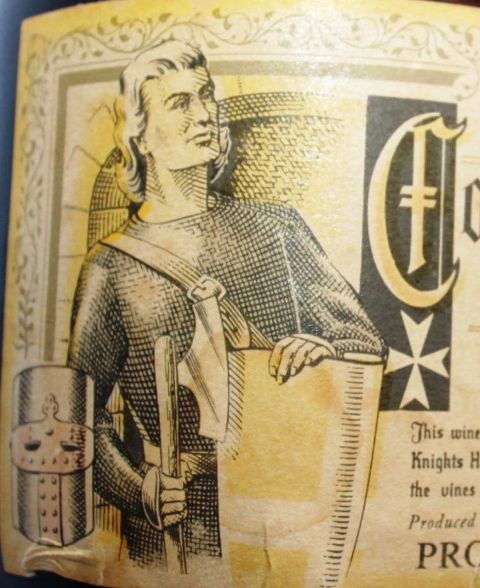 And who were, and still are, the Knights of St. John?
And who were, and still are, the Knights of St. John?
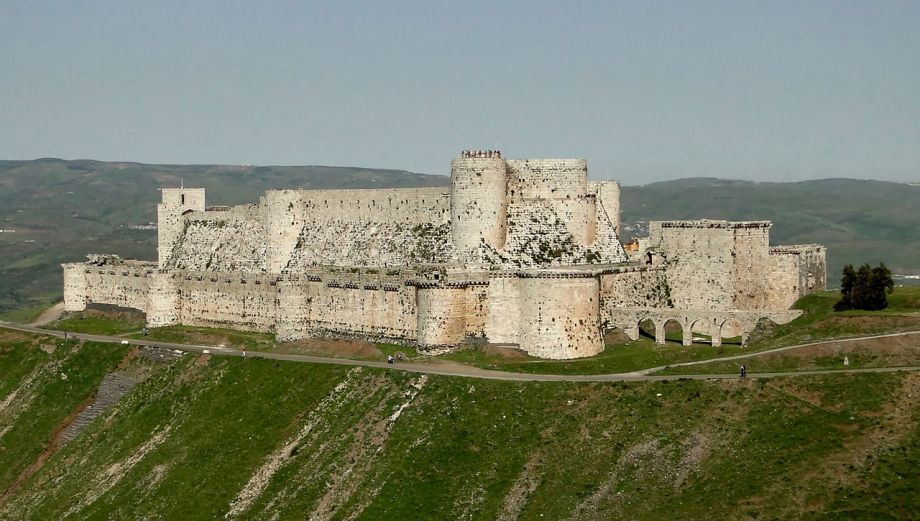
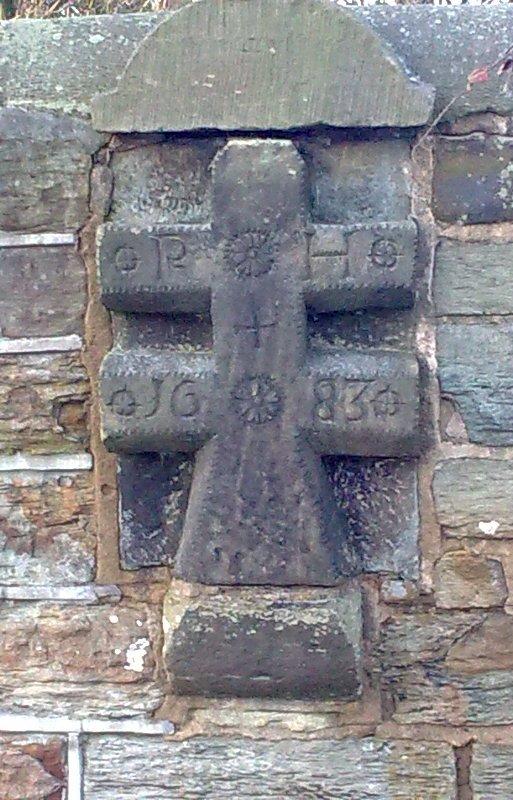 Knights of Cyprus and Rhodes
Knights of Cyprus and Rhodes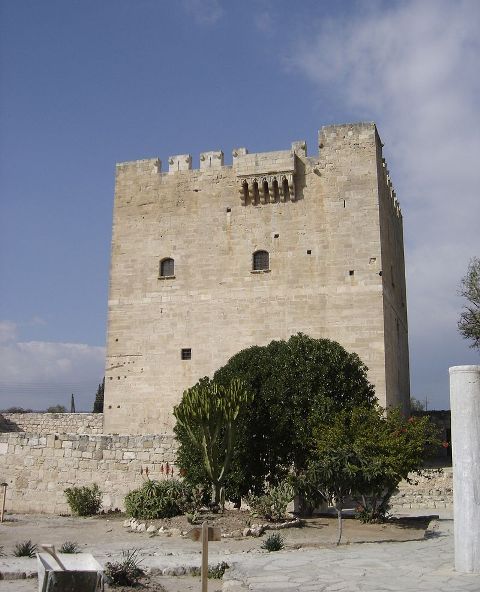 Kolossi Castle is a former Crusader stronghold on the south-west edge of Kolossi village 14 kilometres (9 mi) west of the city of Limassol on the island of Cyprus. It held great strategic importance in the Middle Ages, and contained large facilities for the production of sugar from the local sugarcane, one of Cyprus's main exports in the period. The original castle was possibly built in 1210 by the Frankish military, when the land of Kolossi was given by King Hugh I to the Knights of the Order of St John of Jerusalem (Hospitallers). The present castle was built in 1454 by the Hospitallers under the Commander of Kolossi, Louis de Magnac, whose arms can be seen carved into the castle's walls.
Kolossi Castle is a former Crusader stronghold on the south-west edge of Kolossi village 14 kilometres (9 mi) west of the city of Limassol on the island of Cyprus. It held great strategic importance in the Middle Ages, and contained large facilities for the production of sugar from the local sugarcane, one of Cyprus's main exports in the period. The original castle was possibly built in 1210 by the Frankish military, when the land of Kolossi was given by King Hugh I to the Knights of the Order of St John of Jerusalem (Hospitallers). The present castle was built in 1454 by the Hospitallers under the Commander of Kolossi, Louis de Magnac, whose arms can be seen carved into the castle's walls. 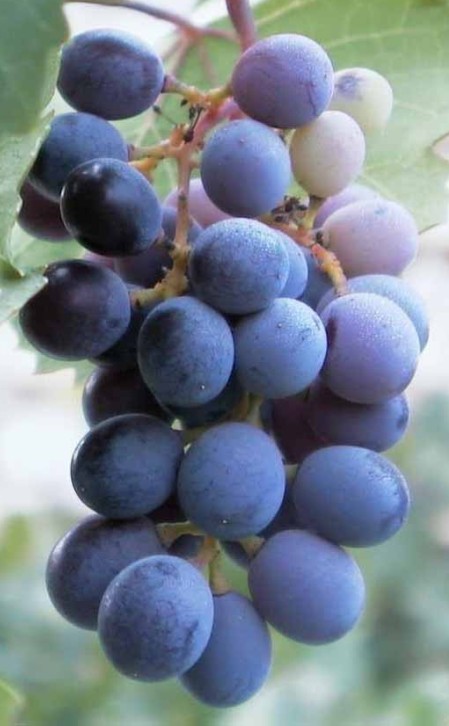 Commandaria is made exclusively from two types of indigenous Cyprus grapes: Xynisteri and Mavro. The grapes are left to overripe on the vine and when sugar content reaches acceptable levels (corresponding to high must weight) they are harvested. More specifically, Xynisteri is picked when at around 12 degrees Baumé (°Bé) and Mavro at 15-16 °Bé. The grapes are then laid out in the sun to further increase the sugar density through evaporation. When the must weight reaches 19 to 23 °Bé the juice is extracted thorough crushing and pressing. Fermentation takes place in reservoirs and will arrest naturally due to the high levels of alcohol achieved at around 15%. The above process has to take place within the confines of 14 designated villages that lie in the Commandaria Region (see below). Commandaria, by law is aged for at least four years in Oak Barrels but this can take place outside the above designated area within Cyprus under strict control and under the conditions laid down in Cypriot legislation.
Commandaria is made exclusively from two types of indigenous Cyprus grapes: Xynisteri and Mavro. The grapes are left to overripe on the vine and when sugar content reaches acceptable levels (corresponding to high must weight) they are harvested. More specifically, Xynisteri is picked when at around 12 degrees Baumé (°Bé) and Mavro at 15-16 °Bé. The grapes are then laid out in the sun to further increase the sugar density through evaporation. When the must weight reaches 19 to 23 °Bé the juice is extracted thorough crushing and pressing. Fermentation takes place in reservoirs and will arrest naturally due to the high levels of alcohol achieved at around 15%. The above process has to take place within the confines of 14 designated villages that lie in the Commandaria Region (see below). Commandaria, by law is aged for at least four years in Oak Barrels but this can take place outside the above designated area within Cyprus under strict control and under the conditions laid down in Cypriot legislation. 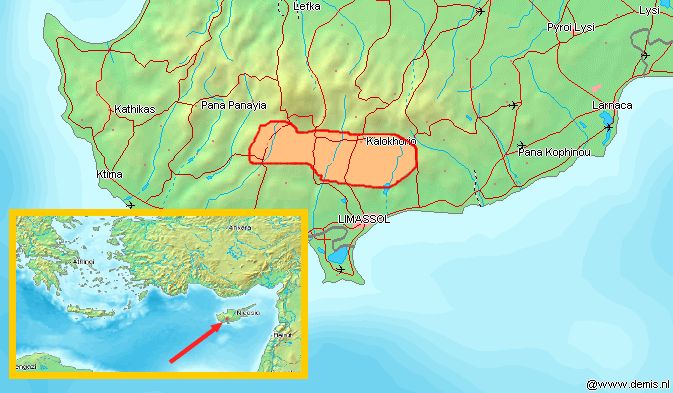
Kolossi Castle Ruins. (2015, April 6). In Wikipedia, The Free Encyclopedia. Retrieved from https://en.wikipedia.org/w/index.php?title=Kolossi_Castle&oldid=655251729
Previous Collectors Corner pages:
Blacksmiths and Tinsmiths Nylon Stockings Poster Art Furphy's Water Cart Mousehole Anvil Sapphire One Armed Bandit Gould's 1840 Single and Compound Microscope Tibetan Thangka Wheel Of Life Painting Cast Iron Seats Mabel Lucie Atwell Prints The Customs of Traditional Dining by Hans and Jenny Carlborg Albert Collins Landscape Boomerang Harmonicas Drinking: 18th Century Style Part I by H&J Carlborg Drinking 18th Century Style Part II by H&J Carlborg Fleece Shears Wood Case Crank Telephone 1803 Timepeice Vintage Guitars Milestones No.38RollsRoyceMotorOiler Christmas Postcards Seashells McCormick-Deering Horse Drawn Mower Rope Making Machine Marilyn Monroe 1955 Calendar Stubbie Holders Hill's Hoist Akubra Hat Fowler's Bottling Kit The Bold Autographed Script Fishing Tackle Arnotts Biscuit Tins Comic Books Silver Opium Pipe Mrs Beetons Book Souvenir Teaspoons Bendigo Pottery Gianelli Figurines Key Fobs Model Aircraft-static Porcelain Slippers Wagon Wheels Rhys Williams Painting Chinese Guardian Lions Australian Halfpenny Bud Vases Rolling Stones Still Life LP Autographed WL1895 Thinking Monkey Estee Lauder Ginger Jar Reel Mowers Surf Reels Millers Car Collection Hilton Lingerie - Slips Miniature Books of Verse - A Romantic Tradition REGA Pouring Can R O Dunlop - Sailing At Itchenor Painting Morning Shadows by C Dudley Wood The Father of Santa Claus - Xmas 2012 HMS Penguin Anchor at RPAYC - Newport SS Birubi Mast at RMYC - Broken Bay Helen B Stirling Ship's Wheel at Club Palm Beach Woomeras HMSEndeavour Replica Cannon at RPAYC The Doug Crane Classic Handmade Double Blade Paddle HMS BountyWooden Ship Model Collecting Ladies - Ferdinand Von Mueller and Women Botanical Artists Australian Bark Art Chinese Ginger Jars Hand Plough and Jump Stump Plough - Australian Inventions Frank Clune Books Frederick Metters - Stoves, Windmills, Iron Monger Trinket Boxes 1933 Wormald Simplex Fire Extinguisher is Pure Brass Chapman 'Pup' Maine Engines - Chapman and Sherack The Beach Ball Figureheads Salty Wooden Personifications of Vessels Binnacle at RMYC The Australian Florin - Worth More Than 20 Cents to Collectors Weathervanes; For Those Passionate About Seeing Which Way the Wind Blows Her Majesty's Theatre 1962 Programme - Luisillo and his Spanish Dance Theatre Cooper's Sheep Shower Enamel Sign and Simpso's and Sons of Adelaide Jolly Drover Sugar Bowl and English Pottery A Means to Gaze into the Past Chief Joseph and Edward S Curtis; His Remarkable Images of Native Americans an Inestimable Record of Images and Portrait Photographs His Masters Voice, Old 78's and Australia's Love of Music Jack Spurlings 'Tamar' Picture 1923 Resch's Beer Art - A Reflection of Australiana Now Worth Thousands The Compleat Angler - Izaak Walton's Discourse Inspires Generations of Fishers Portable Ice-Boxes and Coolers How Many Claim This Invention as Theirs? Malley's and Sons Ltd. - A Munificent Australian Family Company Vintage Paddles and Gigs Nautical Memorabilia The Crinoline - a 550 Year Old Fashion B.B. King - King of the Blues Goes Home: a Timely look into Photographs and Autographs and Being Buyer Aware Deep Down Among the Coral - By Christopher Corr - A Limited Edition Print in Celebration of the seventy fifth anniversary of QANTAS Airways Old Chinese Rice Bowls for Marriage: Worth More Than You Think...
An Ancient Wine - From 1927 with Lineage to Cyprus in 1210/92 and Methods of Production to Greece in 800 B.C. - article by A J Guesdon, 2015.